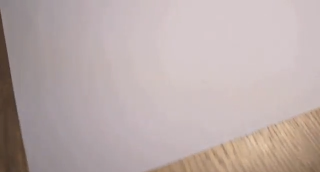1) Story and how the opening sets it up
 |
| Shot of the newspaper pushed through the letterbox, shortly after the girl dreams of the murder |
 |
| The dark shots used of a knife under the bright shots of the girl implies something hidden behind the girl's life that is about to happen. |
Similarly, in 'The Caller', the 5 second shot of the telephone opens the storyline up as the film title implies, a telephone will play an important role in the storyline.
2) How character's are introduced
 |
| Mysterious figure, in the opening of Cape Fear |
3) Genre and how the opening suggests it
We used hints to suggest the genre of our Thriller with props, adding them into certain shots such as this one so the audience could recognise the genre. In our product research, we noticed what conventions of a Thriller are used to imply a certain theme, i.e. red wine = violence, bright light = clinical. The pill box used in our opening is a typical prop used to suggest to the audience a type of psychological or mental instability which is what we wanted to make clear. Also, the lighting in this shot shows the medication being a vital component in the character's life as the clock is in darkness and a lot of light is shining on the pill box.
 |
| Similarly, in this scene from The Exorcist (1973), the religious Thriller genre is expressed through the use of props, the cross and bible on the bedside table. |
4) Title font and style
 |
| "ALPACA54" |
We spent time researching and taking note of certain title fonts that we thought were well suited to our themes. We found that the font "ALPACA54" which we downloaded from Dafont.com was well suited to our title as Precarious means instability or something that's likely to fall and collapse, the font corresponded with the title because it isn't in a straight format and the lettering has jagged edges. The vase gets pushed over and hits the title as it falls, I used the shatter effect on After Effects to make the title smash with the vase and become displaced, which foreshadows the plot involving our main character.
 |
| The font "Zapfino" was one which came with the iMac. |
 |
| Another example of where we used the font, "Zapfino" |
 |
| Similarly, in 'Psycho', the font used reflects the film including the theme of there being faults in someone's mental health. |
 |
| The scene from Inception, with similar lighting to some scenes of our opening. |
In the opening of Inception, a similar lighting is used which gave a sense of forthcoming danger and a suspenseful atmosphere.
6) Costumes and Props
 |
| An example of where the character is wearing plain clothing. |
 |
| Screenshot from 'Se7en' opening. |
7) Special Effects
 |
| We used the cutaway effect on the dream to make it clear that it's a dream and to show the contrast of happiness/murder. |
We used the effect 'cutaway' on iMovie 11 in this shot to create the effect of a flashback whilst the girl is reading the paper. This effect also foreshadowed the idea of the character being psychologically disturbed and unstable. We used jump cuts in the dream scene to disorientate the audience and to highlight that the girl is having a bad dream.
 |
| The cutaway effect being used in the opening of 'Se7en'. |
8) Camerawork and Editing
 |
| The jump cut used in the dream suggests that there will be an interruption or problem involving her and makes it quite disconcerting for the audience. |
 |
| Screenshot from Hitchcocks, 'Vertigo'. |
 |
| We used a close up to emphasise the contrast of the blood against the white clean floor. We also edited this in post production to make the blood redder. |
 |
| We used a tilt/tracking shot when revealing the Doctors note to make the audience intrigued to what it says. |
In the shot where the vase is on the floor, surrounded by water/blood, we used short cuts from it being blood to water and back again to show the paranoia and distorted vision/mind of the girl.
9) Title of the film
We chose to have the title of the film at the end of the sequence as during post production we realised that it fitted really well with the shatter effect when the vase falls onto the floor. Before the vase gets knocked over, the black text against the white floor suggests the heavy contrast of the themes in our film, dreams/reality, sanity/insanity etc so it gave a sense of conflicting themes and stood out nicely. These contrasting colours are often seen in Thrillers, to symbolise different themes within the storyline. The fact that we used black text over the white floor also suggests the idea of some sort of darkness overriding the girls sanity and wellbeing. We wanted to include the title onto our shots instead of having a seperate slide for it as it was a nice composition for the title to be placed and appeared at the climax of the opening, emphasising the importance of the definition of the title to the film overall.
An example from a real product, the title is well embedded into the opening scene of 'Taxi Driver' (1976).

No comments:
Post a Comment